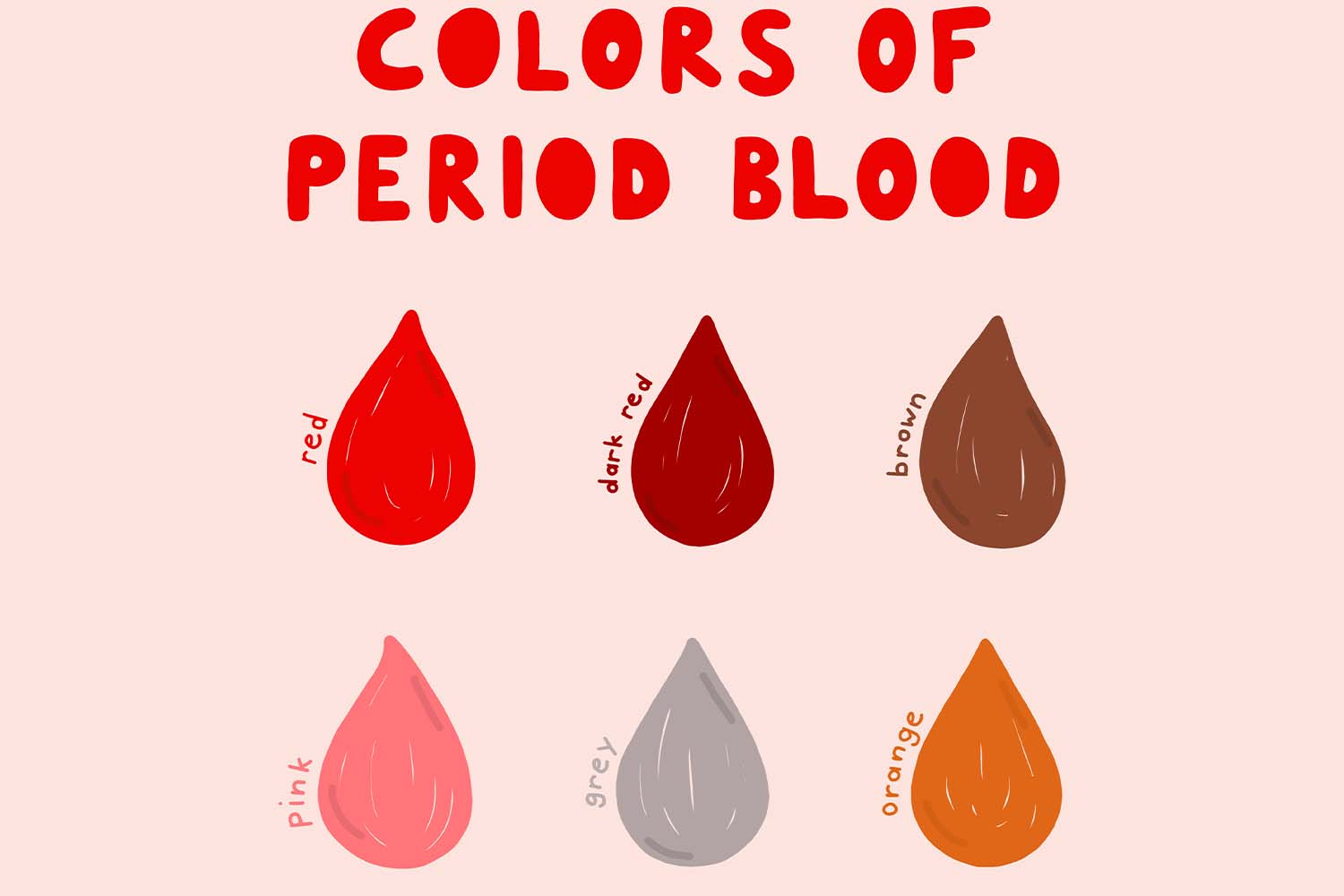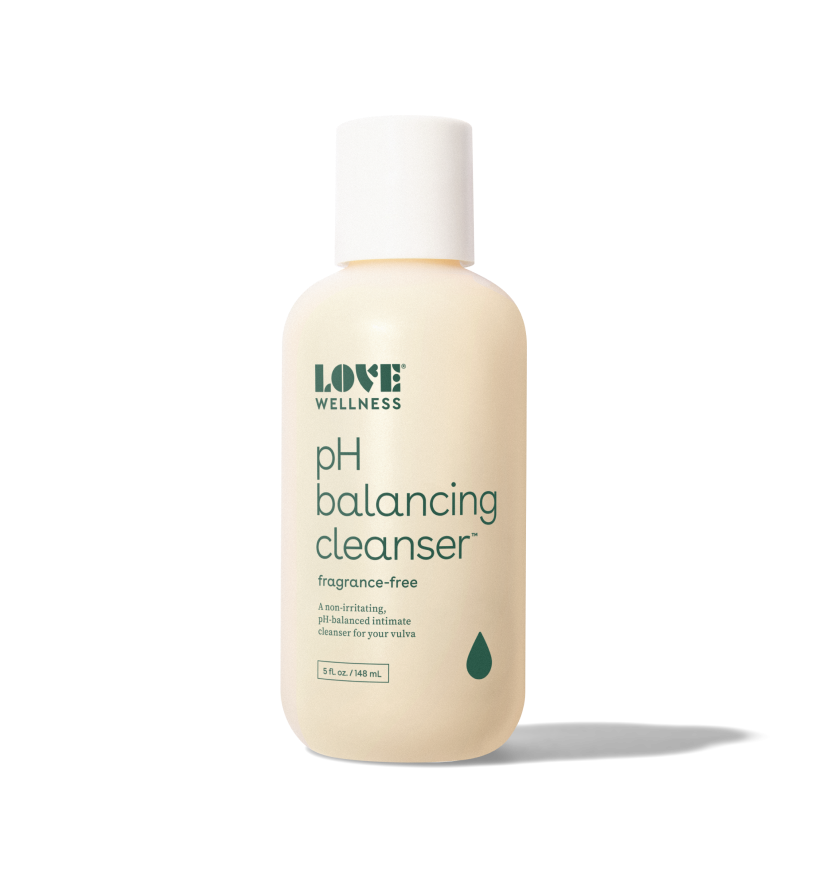Your monthly flow; it comes, it goes. It’s light, or it’s heavy. It’s accompanied by the worst cramps ever or no PMS symptoms at all. It’s a couple of days early or a few days late.
Whether you love it or hate it, your monthly flow is a normal part of life. But have you ever noticed it sometimes changes color — from deep shades of crimson red to the lightest pinks and darkest browns? What in the world is that all about? We’ll tell you.
Read on as we explore the menstruation cycle to uncover why period blood varies in color and what different shades can tell you about your health.
What Should I Know About Menstrual Bleeding?
Before we dive into all the “colors of the period” to decode what they mean, let’s chat a bit about why menstrual bleeding happens in the first place.
During your menstrual cycle, your hormones (especially estrogen and progesterone) prepare your body for pregnancy by thickening the lining of the uterus (aka, your womb). This allows a fertilized egg to implant, allowing you to get pregnant.
If you become pregnant, your period usually won’t return until after birth. On the other hand, if you don’t become pregnant, you’ll shed the thickened lining of your uterus (aka, the endometrial lining) and extra blood through your vaginal canal (aka, your vagina) — this is your period.
Your cycle can be broken down into four phases:
- The Menstrual Phase (Days 1-7) — the first day that you experience menstrual bleeding is counted as the first day of your menstrual cycle. On average, menstruation typically lasts 2 to 7 days.
- Follicular Phase (Days 1-14) — the first day of the menstrual phase also marks day one of the follicular phase, which is when the ovaries begin preparation for an egg to be released for ovulation.
- Ovulation (Mid Cycle) — this phase usually occurs mid-cycle and is the release of a mature egg from the surface of the ovary.
- Luteal Phase (Days 15-28) — during the final luteal phase, your body thickens the lining of the uterus to get it ready for a possible pregnancy. If you don’t get pregnant after ovulation, your estrogen levels begin to drop, which will eventually result in the shedding of the uterus lining via your period.
It’s important to keep in mind that every women’s body is unique, and even though the menstrual cycle occurs in a pattern, it won’t always be exactly the same each month.
In other words, there’s a broad range of what constitutes “normal,” so it’s a good idea to keep track of your cycle to better help you understand what’s normal for you.
That said, while the average length of a typical menstrual cycle is usually around 28 days, it’s common for cycles to range between 21 and 40 days.
What Is Your Period Blood Trying To Tell You?
Believe it or not, your menstrual flow can change colors all the time. Yup, it’s true — seeing a myriad of period colors is very normal and rarely ever a sign that something is wrong. However, your monthly bleed can tell you quite a bit about your health.
The color of your period blood can you tidbits of information, like:
- Where you are in your cycle
- Your current hormone levels
- What’s going on inside your body
- If you’re pregnant
- Whether or not you have an infection
Of course, every woman’s body and period are different, but the colors of menstrual blood usually have similar meanings. Below, we’ve gathered all the colors of the period to decode what each one means:
Bright Red Blood
If your period blood is a nice, bright cranberry red, it’s a good sign that your uterine lining is healthy. And when your uterine lining is healthy, that typically means your immune system, digestive system, and endocrine system are all functioning as they should be. #PeriodGoals
This blood is bright red because it’s fresh, oxygenated, and flowing at a normal speed. There should be little to no blood clots and minimal cramping.
Pink
Pink period blood is usually seen in the very early days of a period. It can look pale, dark pink, or scanty, which are all perfectly normal.
More often than not, pink period blood is the result of a lighter flow mixing with your cervical fluid, diluting its natural red hue. However, if your pink flow is especially thin in texture, it could be indicative of a hormonal imbalance. One example is low estrogen levels caused by hormonal birth control, anemia, extreme weight loss, or a vitamin deficiency.
Brown or Dark Brown
Brown period blood or brown discharge is a pretty common thing to experience at the end of your cycle — just as your flow begins to slow down. The longer the blood has been in your uterus, the darker the color by the time it exits through your cervix. This change happens when your blood has time to oxidize and darkens in color.
That said, brown menstrual blood can also be an early sign of pregnancy — specifically implantation bleeding that happens roughly 10 to 14 days following conception.
So, if you’re experiencing mild cramping, nausea, fatigue, and vomiting alongside brown period blood and discharge, you may want to consider making an appointment with your healthcare provider or gynecologist.
Orange
Are you dealing with orange blood? If so, it could be a sign of an infection — especially when combined with the following symptoms:
- Vaginal itching
- Pain and discomfort
- Foul-smelling odor
- Abnormal discharge
Like pink period blood, orange period blood can also be caused by the mixing of cervical mucus or during implantation spotting.
Black
Black menstrual blood can be alarming, but just like brown blood, it’s usually just old blood that has taken its sweet time exiting your vagina. It usually occurs at the beginning or end of your period when the flow is low.
Although not as common, it’s important to note that black period blood can sometimes be a sign of a blockage in your vagina or a miscarriage.
If your black menstrual blood is accompanied by other symptoms, such as a fever or foul-smelling discharge, seek medical attention to get checked out.
Alternatively, dark red period blood may sometimes be mistaken for black blood. Dark red blood generally just occurs during heavy flow.
Purple
This thick, syrup-like, and often clotted purple menstrual blood can look almost blueberry in color and is often accompanied by painful cramps and other icky PMS symptoms. Help to keep your body in balance during this time of the month with the Balanced Body Kit.
Balanced Body Bundle
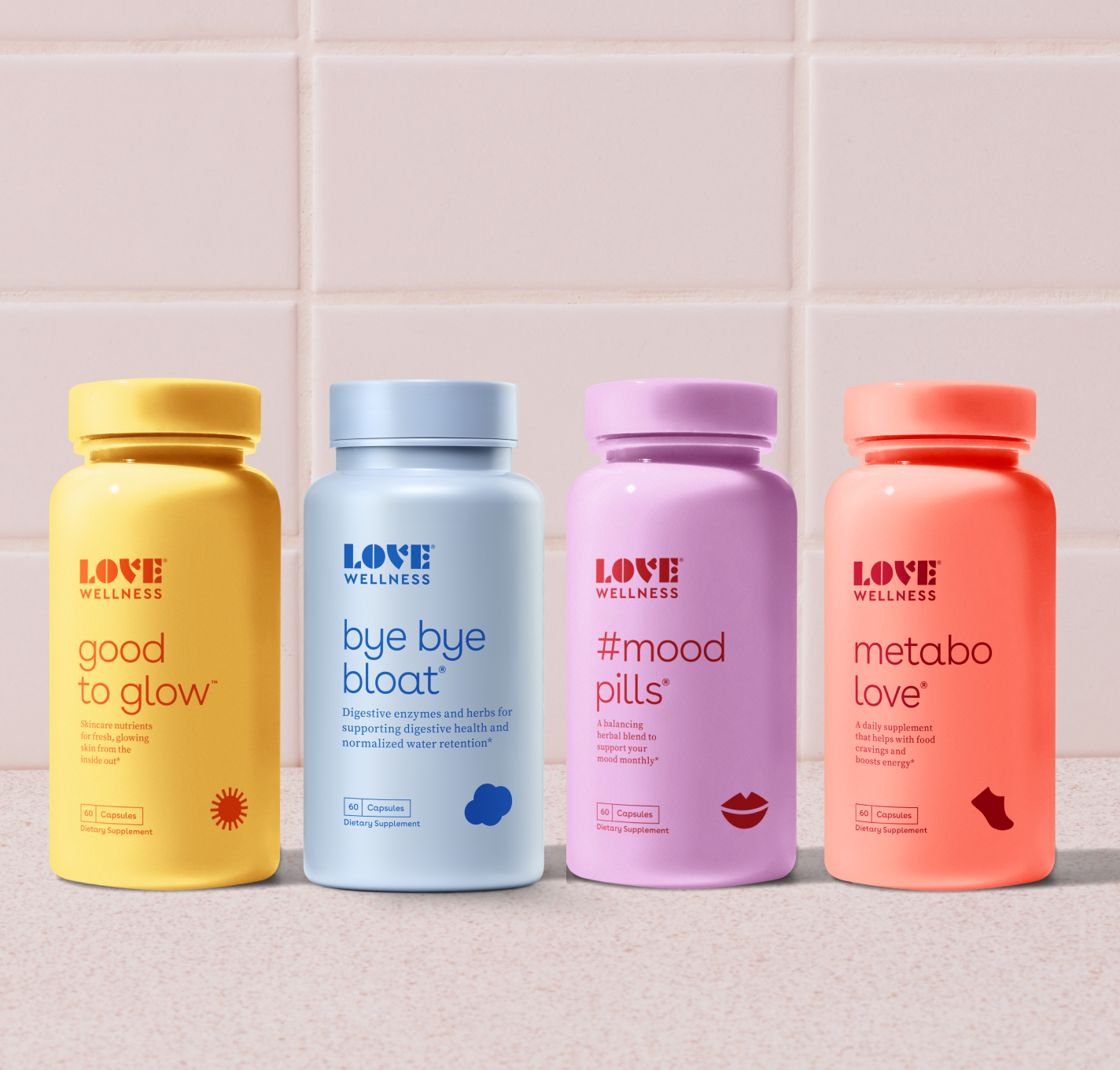
Or 4 interest-free payments with Klarna.
Available for orders above $35. Learn more
If your menstrual flow is purple, it could be a sign that your estrogen levels are really high. Be sure to see your gyno if this doesn’t clear up in a few days, as high estrogen levels can lead to the development of fibroids, endometriosis, or ovarian cysts (ouch!).
In addition, high estrogen can also increase your risk of developing a number of medical conditions that can negatively impact your overall health.
Conclusion
Your dear Auntie Flo can bring you all kinds of fun surprises, including different colors of menstrual blood. But no biggie— it’s nothing you can’t handle.
Here at Love Wellness, we create natural solutions for natural problems. Why? Because we experience them, too! We’re the one-stop shop for the best women’s wellness and personal care products available.
Whether you’re looking for gut-lovin’ probiotics to combat belly bloat, a Vaginal Health Kit to maintain balanced vaginal flora,* boric acid suppositories to balance yeast, or the best pH Balancing Cleanser on the planet, you can always count on us to have your back with clean female-friendly ingredients that are second-to-none.
Check us out today and experience the difference that doctor-developed products (made with love!) can have on your wellness.
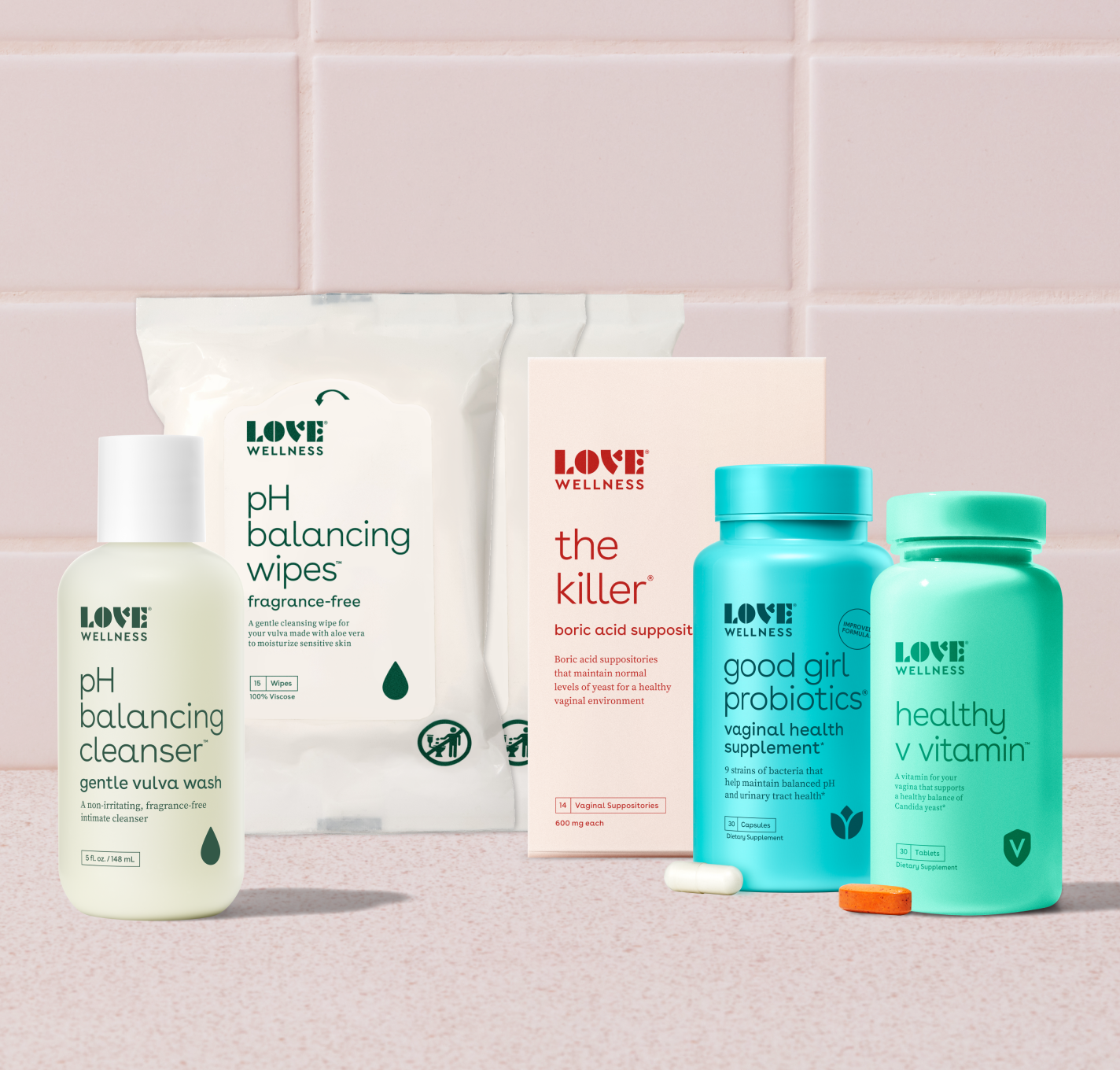
Or 4 interest-free payments with Klarna.
Available for orders above $35. Learn more
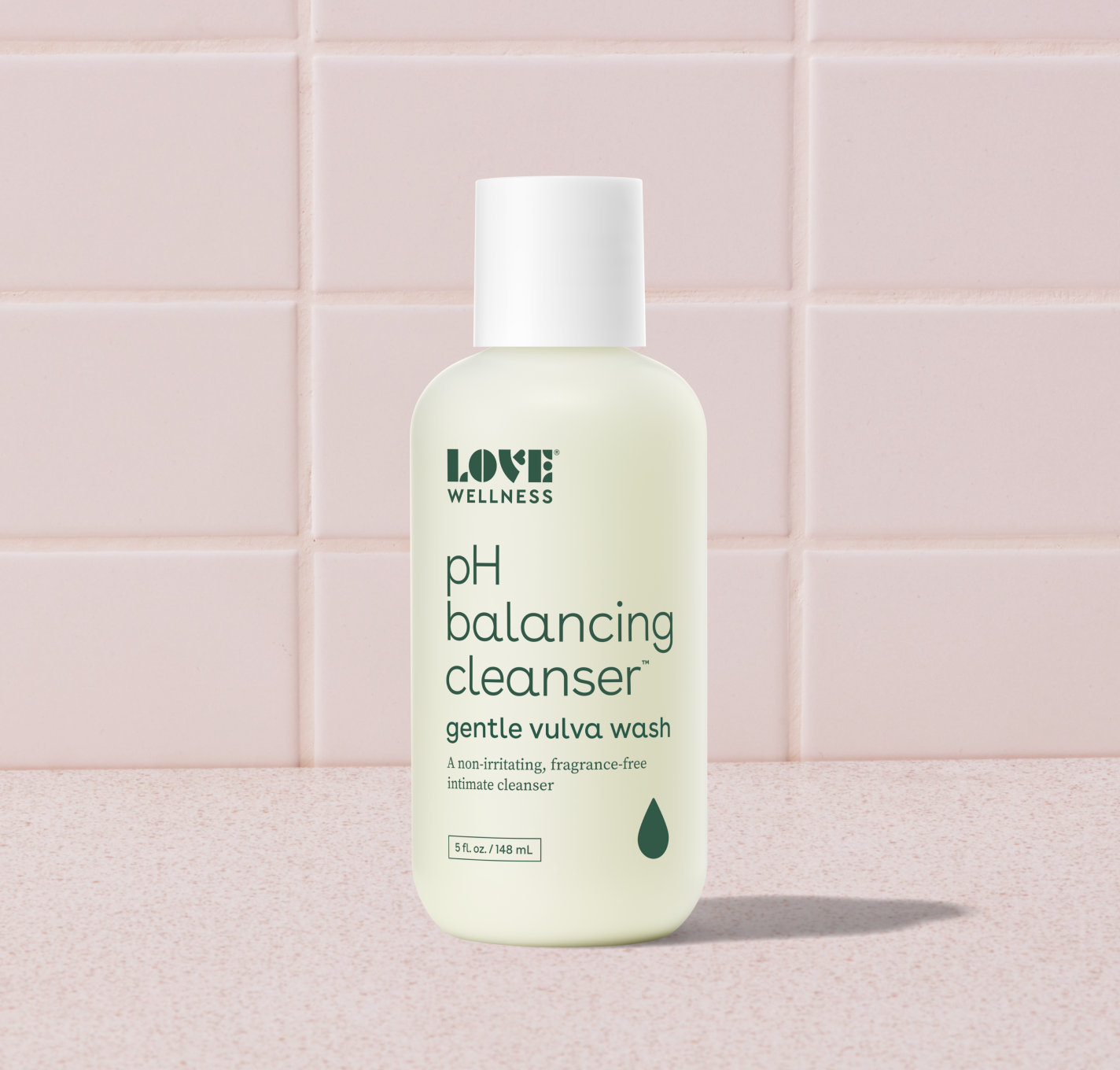
Or 4 interest-free payments with Klarna.
Available for orders above $35. Learn more
Sources:
The Normal Menstrual Cycle and the Control of Ovulation - Endotext | NCBI Bookshelf
Normal Menstruation (Monthly Period): Menstrual Cycle & Symptoms | Cleveland Clinic
Menstrual Cycle: An Overview What Is Ovulation | Hopkins Medicine
What Does the Color of Your Period Mean? | Cleveland Clinic
Yeast infection (vaginal) - Symptoms and causes | Mayo Clinic
What Is Implantation Bleeding? | American Pregnancy Association

